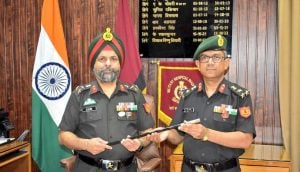Russia has extended invitations to longstanding allies India and China to participate in the development of its cutting-edge Su-75 Checkmate, a fifth-generation single-seat fighter aircraft, in a significant move that could potentially redefine the dynamics of aerospace partnership.
Su-75 Checkmate: Russia Invites India and China
The Su-75 Checkmate has recently undergone considerable design revisions, including the construction of a two-seat tandem version and an unmanned derivative, ushering in a new era in Russian military aviation.
Sukhoi, a subsidiary of United Aircraft Corporation (UAC), designed the Su-75 Checkmate. This advanced fighter aircraft symbolises Russia’s ambition for a new-generation light multi-role combat aircraft, using cutting-edge technology solutions such as reduced radar signature, AI, and advanced materials.
Also read: Meet the Russian ‘Checkmate’ Sukhoi Su-75
The Su-75 Checkmate is remarkable in that it is the first single-engine fighter designed by the Russian aerospace industry in decades. This indicates that it will be built for the export market to compete with countries searching for single-engined stealth fighters with low operational expenses.
Significant Changes in Su-75 Checkmate
The design of the Su-75 Checkmate has undergone significant refinements in recent years, indicating the aircraft’s versatility and commitment to ongoing improvement. The wing structure has been modified, with an enlarged and angled trailing edge that increases wing area and perhaps reduces rear radar signature. The engine installation has also been advanced subtly, indicating a focus on performance and efficiency.
The change in the fuselage is noticeable, indicating an increase in the internal volume of the aircraft. This might include improvements to the side armament bays or an increase in internal fuel capacity – both of which are necessary for extended operational capabilities.
The invitations issued to India and China to join the Su-75 Checkmate programme are extremely crucial. Both countries have aggressive fifth-generation fighter jet programmes, demonstrating their dedication to developing aerospace capabilities. Nearly a decade ago, India and Russia formed a joint company to build the FGFA based on the Russian Su-57 platform. Differences in technological development and workshare distribution, on the other hand, pushed India to withdraw from the project.
To crack the SSB Interview and join the Indian Armed Forces as an Officer, You can join our SSB interview live classes batch and we recommend you to Enroll SSB INTERVIEW ONLINE COURSE. Trusted by thousands of defence aspirants.
Also Read:























1 thought on “Su-75 Checkmate: Russia Invites India and China to Co-Develop the Fighter Jet”
Bad idea. No more Russian junk